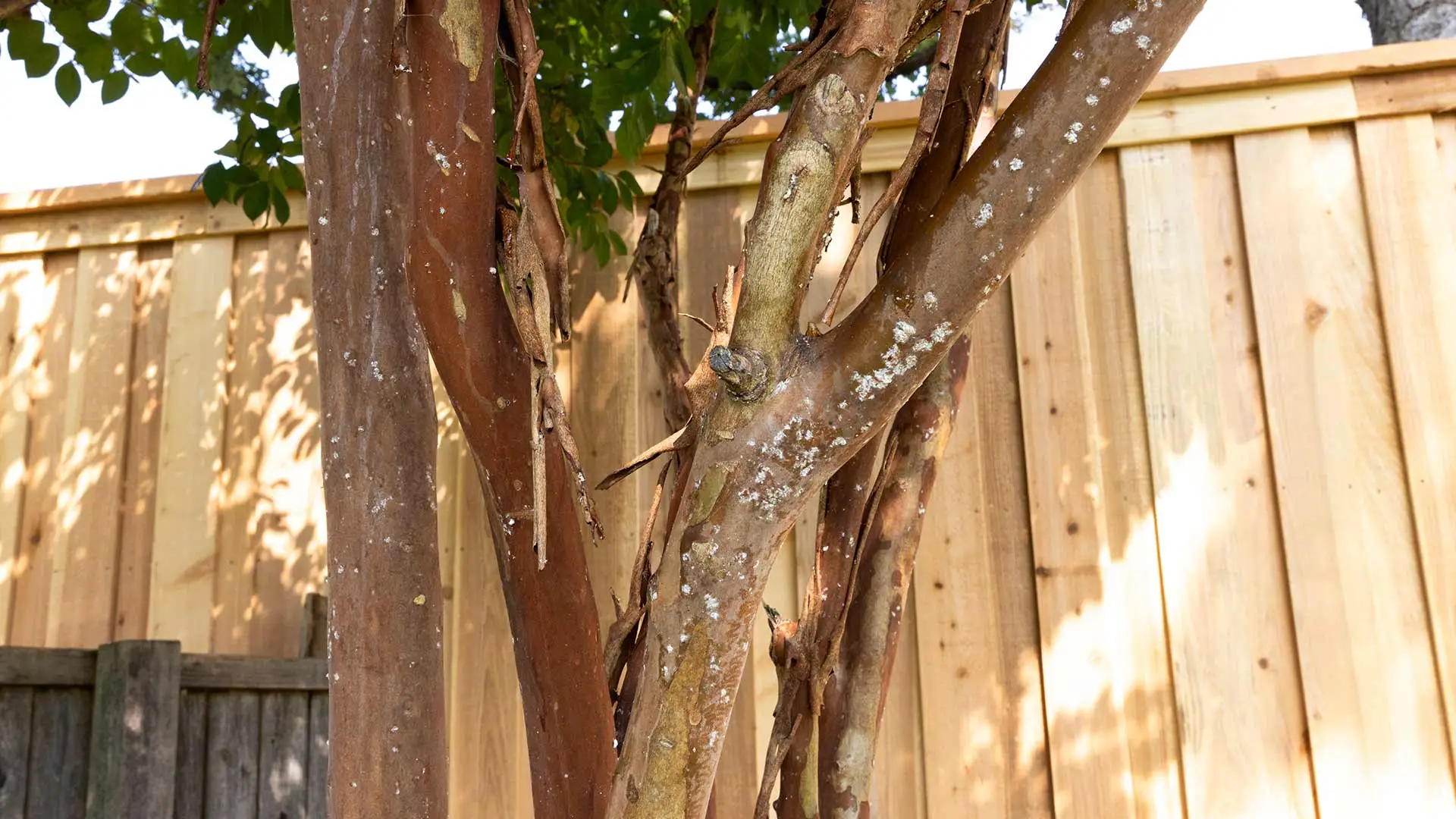Crepe myrtle bark scales are a relatively new insect breaking out in Texas. They are drawn to crepe myrtle trees to feed on their sap. Female crepe myrtle bark scales end up staying there for most of their very brief life cycle. They hatch in spring and die in September, but during that time they can lay hundreds of eggs. Meanwhile, the males will eventually develop wings to fly and mate with the adult females. These insects are quite easy to notice though. Your tree will be covered in white specks or patches, and those white specks will expel a pink liquid when they're squished. If you notice your tree is covered in crepe myrtle bark scales, then it may be time to call a professional who specializes in tree and shrub health care. A professional will be able to treat your trees using a systemic insecticide to eliminate these insects from your trees.
Life Cycle of the Crepe Myrtle Bark Scale
Crepe myrtle bark scales start out as nymphs, which hatch from their eggs in spring. During this stage of their life cycle, the nymphs are commonly referred to as crawlers because this is when they're the most mobile. Crawler activity peaks in spring between mid-April to the beginning of May. Once the crawler settles on a tree, they remain in that spot during this stage of their development. After settling on a crepe myrtle tree, they feed on its sap to grow. Eventually, some of the crawlers encase themselves in a white sac and develop into prepupa, pupating further inside to become an alate male. These alate males develop wings at this stage and will fly to mate with adult females. The female scales, however, do not enter the pre-pupal stage. Instead, they stay on the tree to feed and grow. As they mature, they start producing eggs after mating with a male. Adult females lay eggs from May through September before dying. The female scales can lay around 100 to 300 eggs in their brief lifetime.
How to Identify Crepe Myrtle Bark Scales

Crepe myrtle bark scales are relatively easy to identify. When inspecting your crepe myrtle, you'll notice patches of white or grey scales on the trunk, branches, or twigs due to the females covering themselves in a felt-like white casing after settling on a tree. Squishing one of these casings will cause a pink liquid to ooze out of them. If the crepe myrtle bark scales are left alone, they will continue to feed on your tree’s sap and produce a substance called honeydew, making your trees wet and sticky. The honeydew they produce can lead to your crepe myrtle being covered in a fungal disease called black sooty mold.
Ants tend to congregate on trees with crepe myrtle bark scales because of the honeydew. If you see lots of ants on your tree, look for white scales!
What To Do if You Find Crepe Myrtle Bark Scales
When you notice crepe myrtle bark scales infesting your trees, you should reach out to a professional to handle them. The crepe myrtle bark scales are difficult to control once they’ve settled on a tree and an infestation breaks out. Unfortunately, spraying contact insecticide directly onto the egg sacs and pupae will prove inefficient because they coat themselves in white wax that provides them with protection. Crepe myrtle bark scales require a systemic insecticide treatment to properly deal with them. The soil will need to be drenched with a systemic insecticide through soil injections to get to the root zone of your tree. When these insects feed on the sap of your crepe myrtle tree, they will ingest the insecticide, which will kill them. It targets the scales without harming your tree. For the best results, it's recommended you get this treatment sometime in May or June before the females have a chance to lay the majority of their eggs.
Call us to schedule our crepe myrtle bark scale treatment!
Crepe myrtle bark scale season is just beginning here in Texas. If you find your crepe myrtle trees infested with crepe myrtle bark scales this spring, and you're in Plano, Allen, Frisco, McKinney, or in one of the surrounding areas in Texas, then call us at 972-516-0001 to schedule our crepe myrtle bark scale treatment. This treatment is included with our tree and shrub fertilization service, but it can be scheduled separately too!







